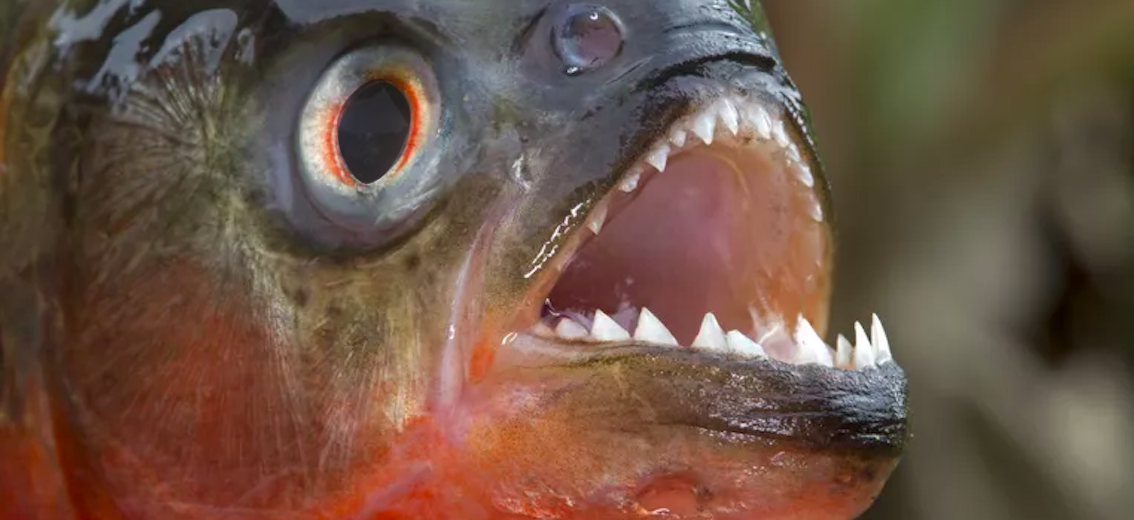
The piranha is a small to medium sized fish that lives in rivers and lakes of South America. They have also been introduced to some rivers and lakes in North America and Kaptai Lake in Bangladesh. The name piranha means “fish tooth” in some indigenous languages of the Amazon. The exact number of species of piranha is unknown, but is estimated at over 30.
First the Stats…
Scientific name: Pygocentrus
Weight: Up to 8 lbs.
Length: Up to 2 feet
Lifespan: Up to 10 years
Now on to the Facts!
1.) These fish are typically thought of as voracious, blood thirsty killers that attack anything that lands in the water. However, they are actually omnivores (feed on plant and animal matter) that, especially in captivity, are actually quite shy. I still don’t recommend taking a dip with a school of them though.
2.) They typically feed on snails, aquatic animals, fish, plants, seeds, and fruit. However, they will also happily eat mammals that fall into the water.
3.) Their sharp single rowed teeth can easily cut through a metal hook as their jaws have a bite force of 72 lbs. per square inch!
4.) The piranha’s powerful jaws are capable of crushing a human hand in seconds!
5.) Piranhas are also cannibals that will turn on each other if food is scarce.
But wait, there’s more on the piranha!
6.) The main predators of piranhas are river dolphins, birds, turtles, larger pescatarian fish, and caiman.
Did you know…?
Theodore Roosevelt is largely at fault for spreading the rumor that these fish are blood thirsty killers.
7.) Piranhas have specialized fossa, like sharks, that help them detect trace amounts of blood in the water.
8.) If a piranha is found outside of South America it is typically introduced by a hobbyist and they can become very invasive.
9.) There is fossil evidence that suggests that piranhas have lived in South America for millions of years!
10.) They typically go for the eyes and tails of fish when attacking. This tactic is thought to be executed in order to immobilize their prey.
Did you also know…?
Piranhas can also vocalize, making grunts, thuds, and even barking noises! If these sounds don’t threaten an aggressor they will gnash their teeth and attack.
11.) A group of piranhas is called a school or shoal.
12.) Attracted to splashing, noise, and blood these critters typically only attack if threatened, really hungry, or are guarding their eggs.
13.) Female piranhas lay over 1,000 eggs at a time and they are deposited in the sand.
14.) The piranha can regrow lost teeth.
Now a Short Piranha Video!
Also, check out the Critter Science YouTube channel. Videos added frequently!
Want to suggest a critter for me to write about? Let me know here.



